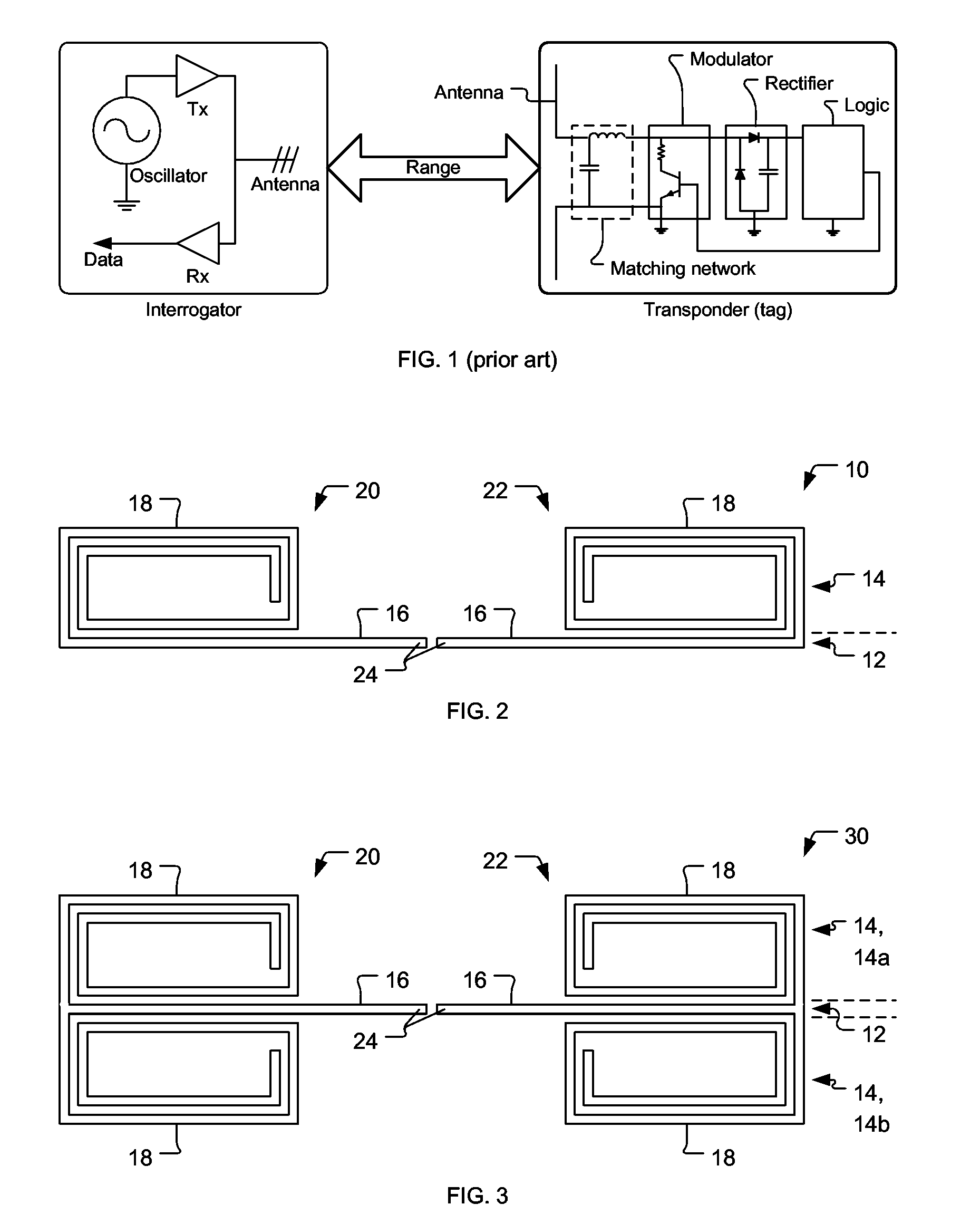RFID antenna
- Summary
- Abstract
- Description
- Claims
- Application Information
AI Technical Summary
Benefits of technology
Problems solved by technology
Method used
Image
Examples
Embodiment Construction
[0030] A preferred embodiment of the present invention is an antenna for use in Radio Frequency Identification (RFID) transponders. As illustrated in the various drawings herein, and particularly in the views of FIG. 2-5, preferred embodiments of the invention are depicted by the general reference characters 10, 30, 50, and 70.
[0031]FIG. 2 depicts an antenna 10 in accord with the present invention that consists of two sections 12, 14. The first section 12 consists of the mainly radiating components, here straight conductive traces 16, while the second section 14 consists of substantially reactive components, here spiral conductive traces 18. The spirals shown in the figures herein are typical, and might have an arbitrary number of turns, lengths, widths, etc.
[0032] In the characteristic manner of dipole-type antennas, the antenna 10 here has a left dipole half 20 mirrored by a right dipole half 22. These half's of the antenna 10 do not correspond with and should not be confused wi...
PUM
 Login to View More
Login to View More Abstract
Description
Claims
Application Information
 Login to View More
Login to View More - R&D
- Intellectual Property
- Life Sciences
- Materials
- Tech Scout
- Unparalleled Data Quality
- Higher Quality Content
- 60% Fewer Hallucinations
Browse by: Latest US Patents, China's latest patents, Technical Efficacy Thesaurus, Application Domain, Technology Topic, Popular Technical Reports.
© 2025 PatSnap. All rights reserved.Legal|Privacy policy|Modern Slavery Act Transparency Statement|Sitemap|About US| Contact US: help@patsnap.com



